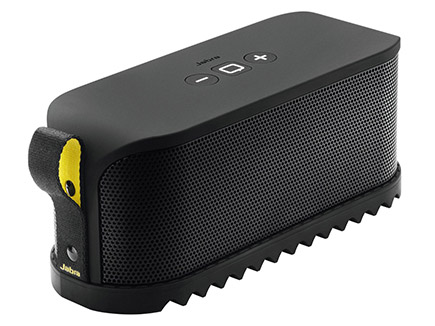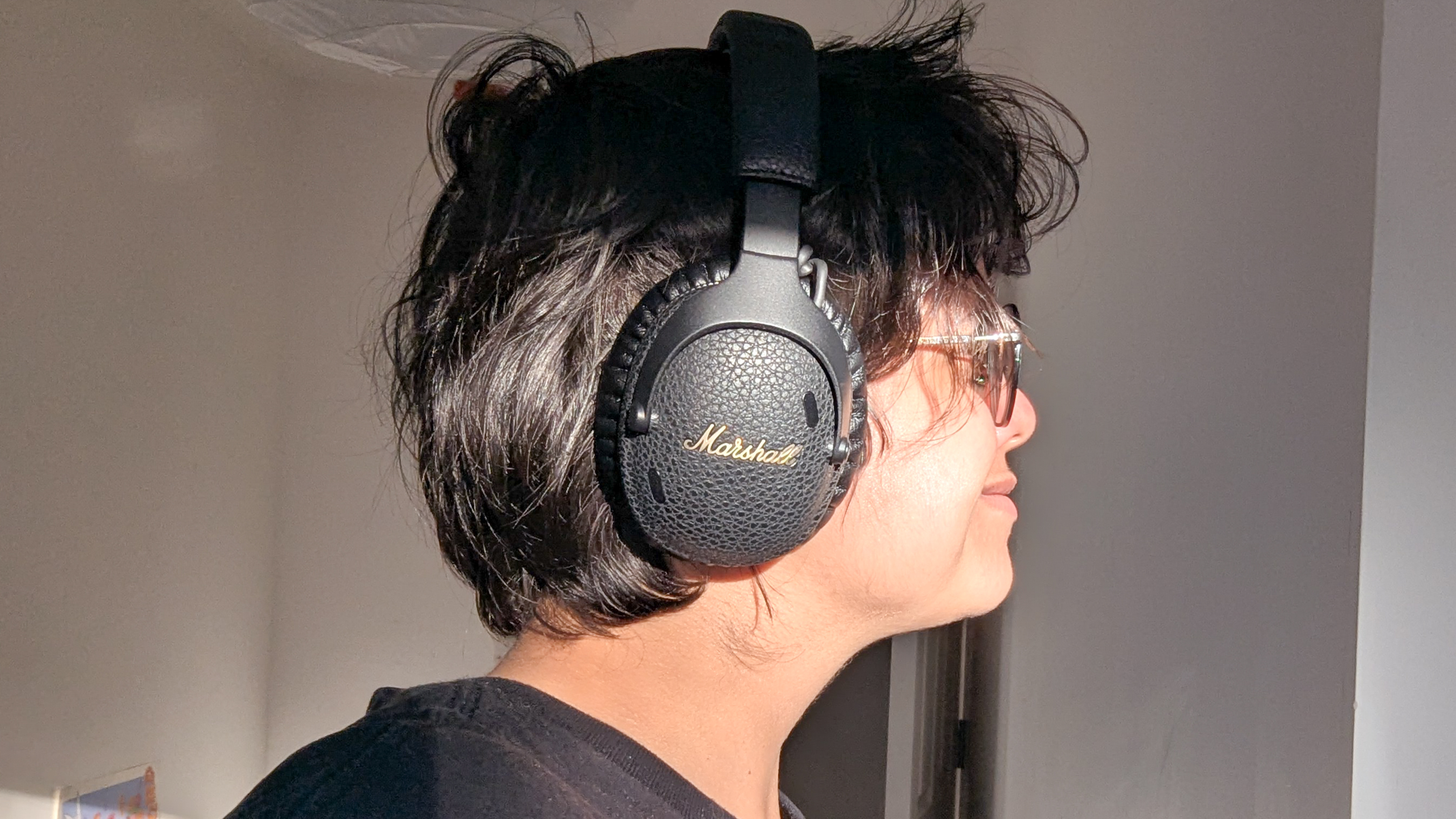Tom's Guide Verdict
The Jabra Solemate makes it easy to answer calls, but average audio sinks it as a speaker for listening to music.
Pros
- +
Easy to use as speakerphone
- +
App improves sound
Cons
- -
Annoyingly loud voice guidance
- -
Music lacks vibrant treble tones
Why you can trust Tom's Guide
Many portable Bluetooth speakers include speakerphone functionality, but few feature phone functionality as prominently as the $150 Jabra Solemate, especially at that price. But while the Solemate works well enough as a speakerphone, it has room for improvement when it comes to the main reason people buy a portable Bluetooth speaker: listening to music.
Design
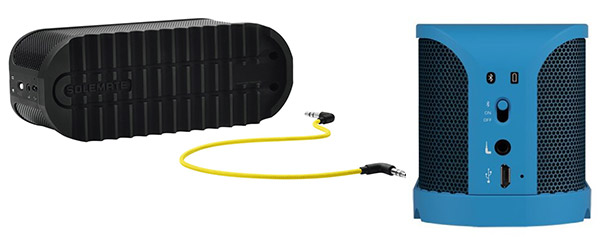
At 6.8 x 2.8 x 2.5 inches, the Solemate's rectangular shape looks blocky compared with the cylindrical elegance of the 7.1 x 2.6-inch, 19-ounce UE Boom, but its silicon and iron exterior gives it a tough sense of style. The bottom of the speaker looks like a sneaker sole (perhaps the source of its name), which grips the surface it is placed on securely — you don't have to worry about this thing rolling away. A fabric handle on the side encourages you to tote the 21.5-ounce speaker with you.
The Solemate offers minimal controls: power, auxiliary input and the microUSB port are on one side; while volume up, down and answer/end call buttons sit on top (placing emphasis on the speakerphone function, befitting Jabra's origins as a Bluetooth headset maker).
MORE: Best Bluetooth Speakers
Interestingly, the Solemate mainly relies on voice guidance to update you on its status, including battery life, connections and call status. Unfortunately, you can't control the voice guidance volume, so it is almost always too loud for an interior situation (you can turn off voice guidance, but then you'll be in the dark about the device's status).
Water resistance
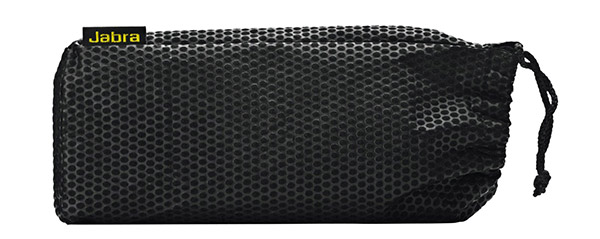
Jabra took a different approach to water resistance with the Solemate: It includes a water-resistant bag that you can slip the speaker in. The company doesn't give an IPX rating but calls the device splash proof while in the bag. And though the bag may protect the speaker, it doesn't do any favors for the sound quality — the barrier slightly muffles the output.
Setup and Use

The Solemate paired without trouble to iOS and Android devices over Bluetooth. To set it in discovery mode so that your mobile device can find it, you push upthe power switch for three seconds. In iOS, go to Settings > Bluetooth, where Jabra Solemate should appear under Devices.
On an Android device, after the speaker is in discovery mode, you go to Settings and look for the speaker listed in Available Devices. If you have an NFC-equipped Android device, just touch the speaker and the mobile device together for the fastest pairing — you'll see a pop-up on your device that asks if you want to pair it with the speaker. Click Yes, and you're set.
MORE: Our Favorite Sound Bar Speakers
The Solemate claims a Bluetooth range of 30 feet, and we found that to be accurate indoors. Outside, the connection also remained strong up to 20 feet, better than many other units we've tested.
If you prefer, you can use the 12-inch 3.5mm cable — conveniently laced into the bottom of the speaker for safekeeping. This uses less power on your smartphone or tablet and ensures connection quality, though it limits the distance between your mobile device and the speaker. You can also connect directly to a computer via USB to use it as your audio output.
Audio Performance
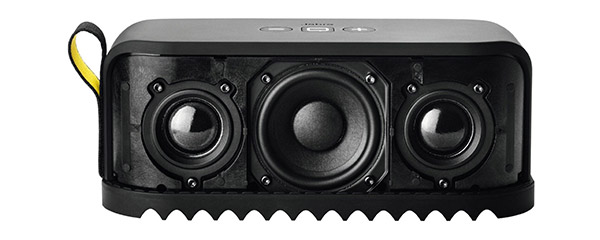
As a speaker, the Solemate is wanting, but it's not from lack of trying. Jabra packed in two tweeters and a mid/woofer to try to produce hi-fi sound. Plus, the entire back of the Solemate has a 1-inch x 4-inch passive radiator to help pump up the bass.
Unfortunately, Jabra's efforts at big sound fall short. On St. Vincent's "Digital Witness," the Solemate balanced bass and mid tones well, but it lacked the treble tones that would help the music pop more on units like the UE Boom. Similarly, the acoustic guitar and vocals on Beck's "Heart Is a Drum" resonated, but overall the song was missing the full spectrum of sound we heard on models like the Fugoo Style.
Every song we listened to on the Solemate sounded good but not great. The sound was also very directional — you need to be directly in front of the speaker or the sound quality deteriorates, unlike the UE Boom and Fugoo Style, which spread sound equally in all directions.
Jabra's free Sound app for iOS and Android applies Dolby processing digital signal processing to boost the mids and treble tones to any DRM-free song played within the app. You can also help personalize the sound by choosing from 17 EQ options. Unfortunately, the sound improvements only work on songs played from within the app; it doesn't work on Pandora, Spotify or other streaming services.
Speakerphone
The Solemate makes it simple to answer a call: Just push the center button on top of the speaker (tap that same button to end the call). This on-speaker control helps set it apart from units like the UE Boom. The voice on the other end of the call came through loud and clear, but we had some complaints from our call recipients. The Solemate's microphone wasn't as clear as when using the iPhone alone and it also couldn't keep up with the call quality of the UE Boom.
Battery Life
Solemate promises 10 hours of talk time and 8 hours of music playback — not spectacular when compared with UE Boom's 15 hours of playback or Fugoo's incredible 40 hours. In several hours of testing over about a week, we had no problem with power. In fact, the voice guidance still said the battery was full (which made us question the accuracy of the reading).
The Solemate features a built-in battery and charges via microUSB. The unit ships with a wall plug, or you can charge it using your computer's USB port or any USB wall charger.
Verdict

If you plan to use your portable Bluetooth speaker as a speakerphone first and for music playback second, the Jabra Solemate could be a good choice, especially if you want to save some money versus the competition. However, the Solemate's lackluster performance on music playback makes it hard to choose over other options. For $50 more, the UE Boom sounds great for music and works very well as a speakerphone, too.
Specs:
One 2-inch mid/woofer
Two ¾-inch soft dome tweeters
One 1-inch x 4-inch passive bass radiator
Size: 6.77 x 2.75 x 2.52 inches
Weight: 21.5 ounces
Inputs: Bluetooth, 3.5mm auxiliary input
NFC: Yes
Follow Michael Gowan @zebgowan and on Google+. Follow us @tomsguide, on Facebook and on Google+.

Michael Gowan is a freelance technology journalist covering soundbars, TVs, and wireless speakers of all kinds of shapes and sizes for Tom’s Guide. He has written hundreds of product reviews, focusing on sound quality and value to help shoppers make informed buying decisions. Micheal has written about music and consumer technology for more than 25 years. His work has appeared in publications including CNN, Wired, Men’s Journal, PC World and Macworld. When Michael’s not reviewing speakers, he’s probably listening to one anyway.
